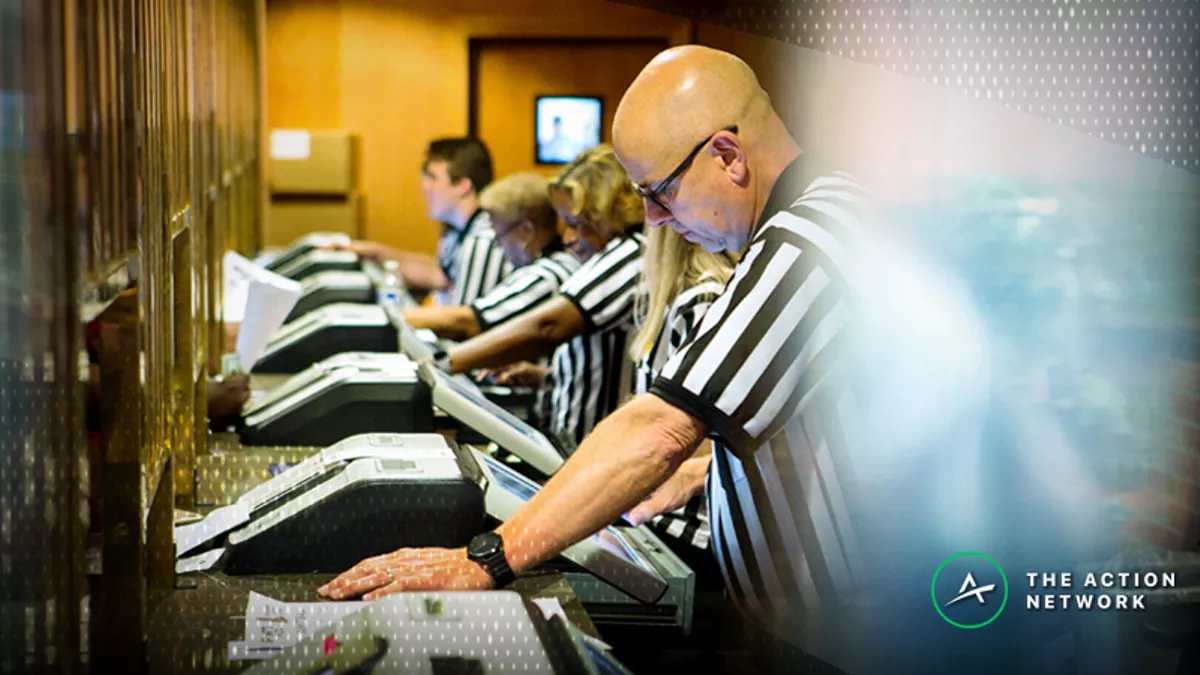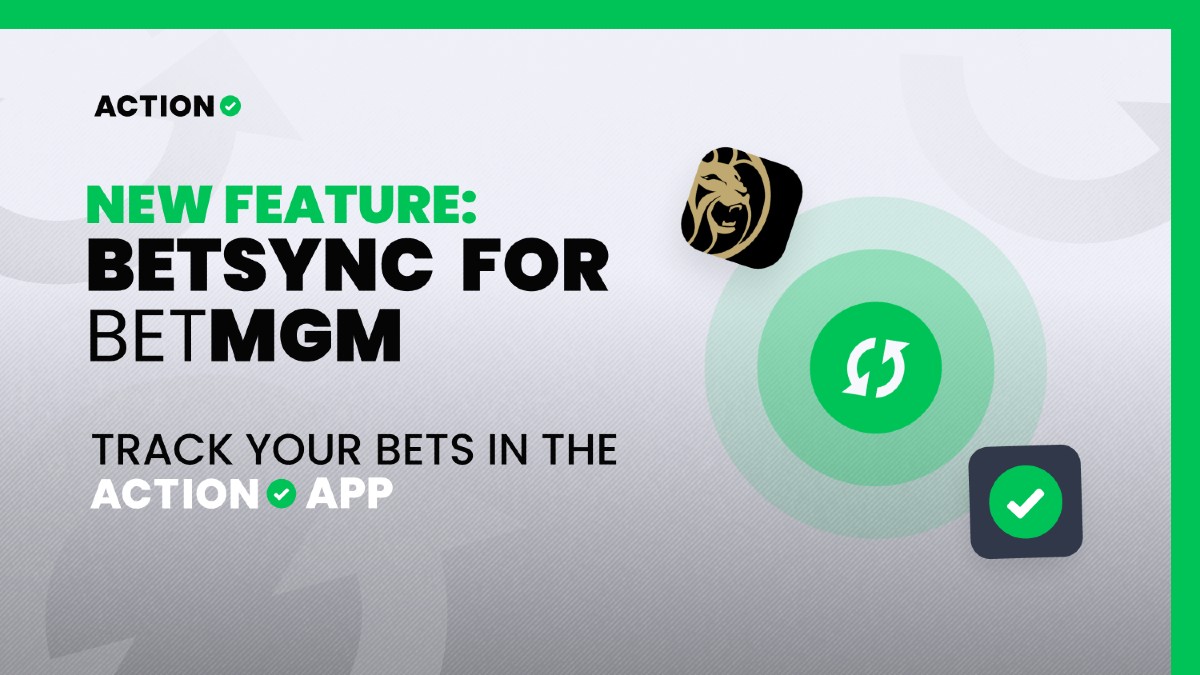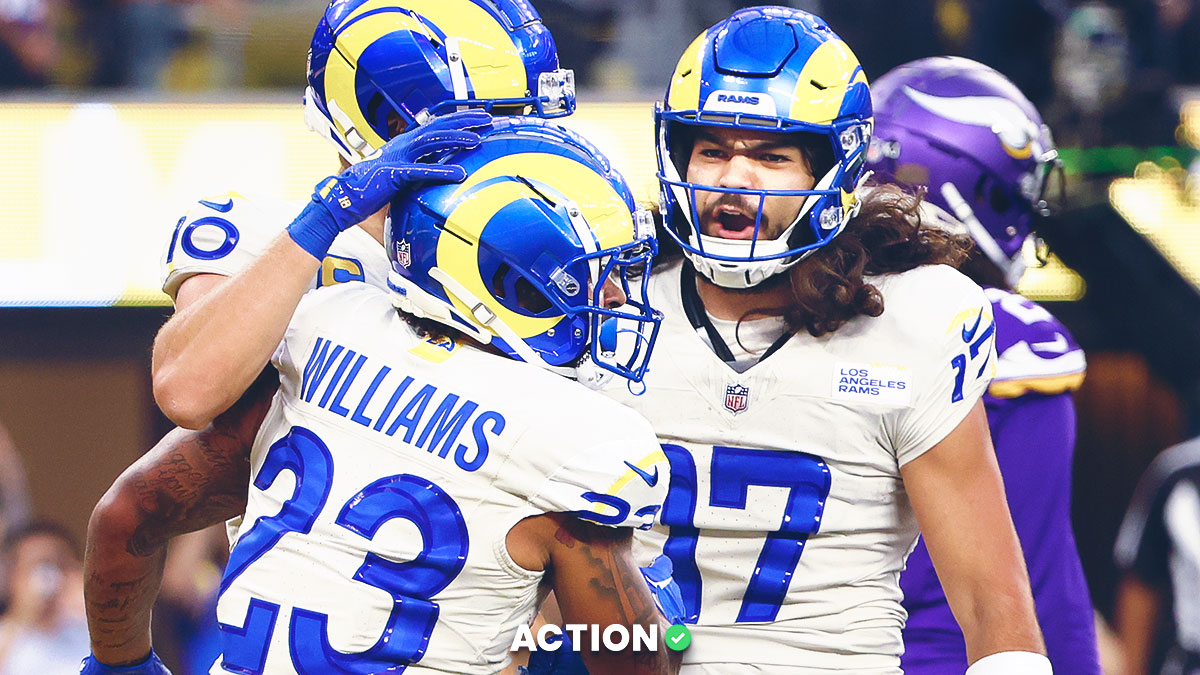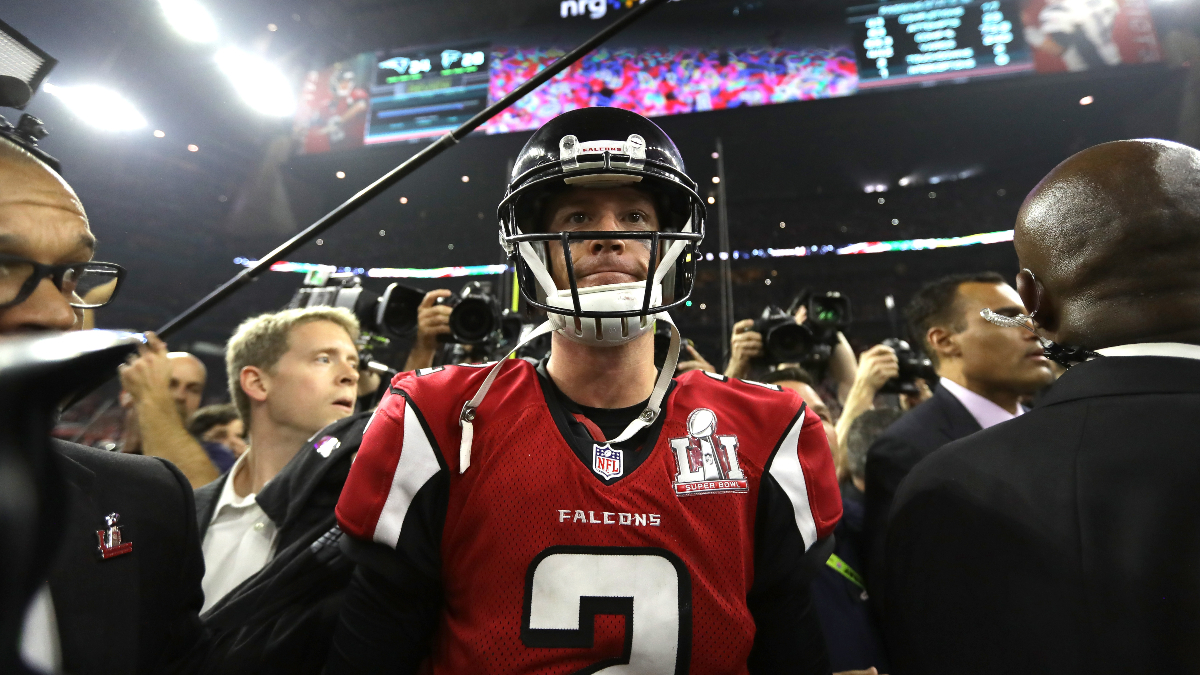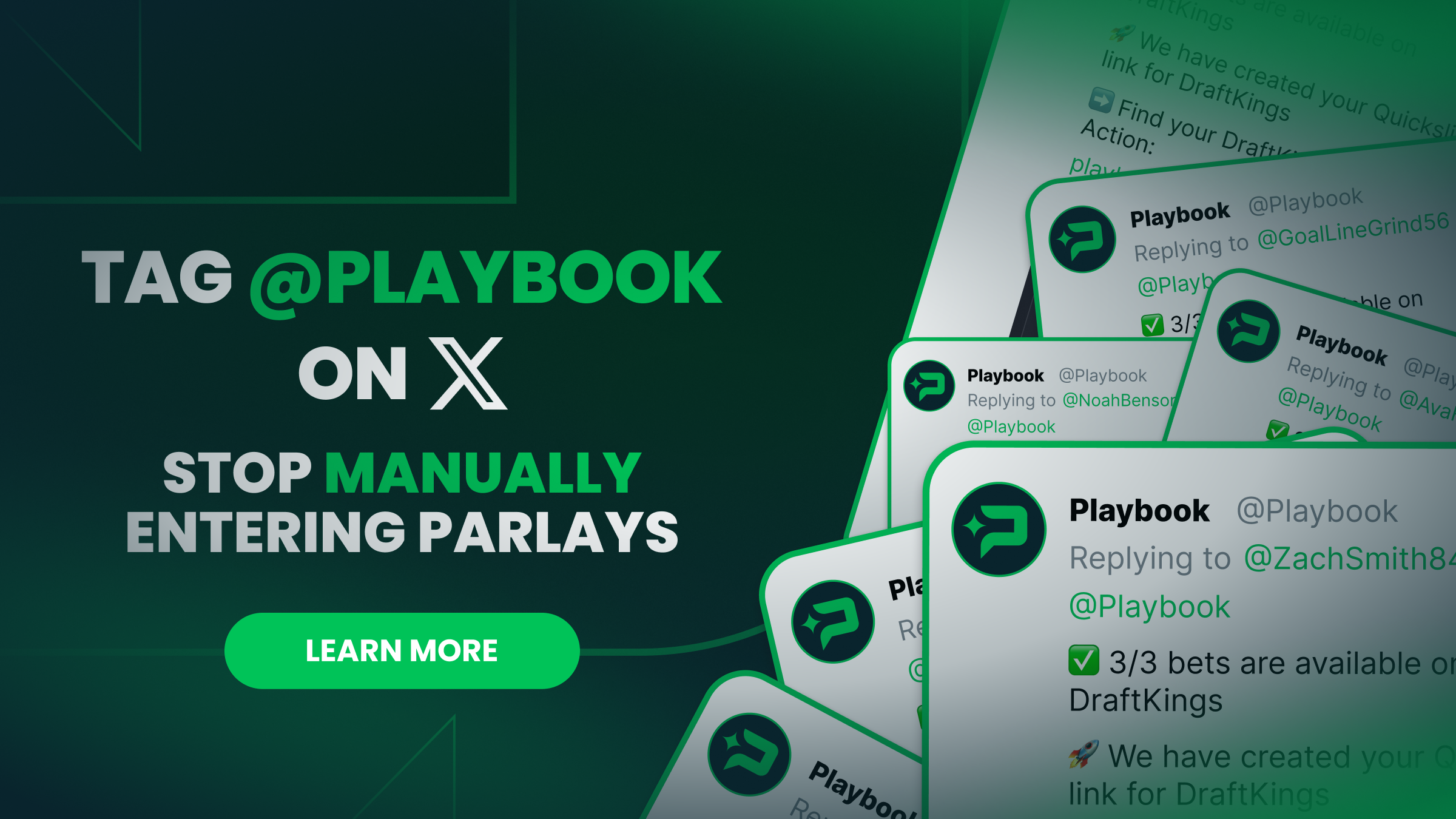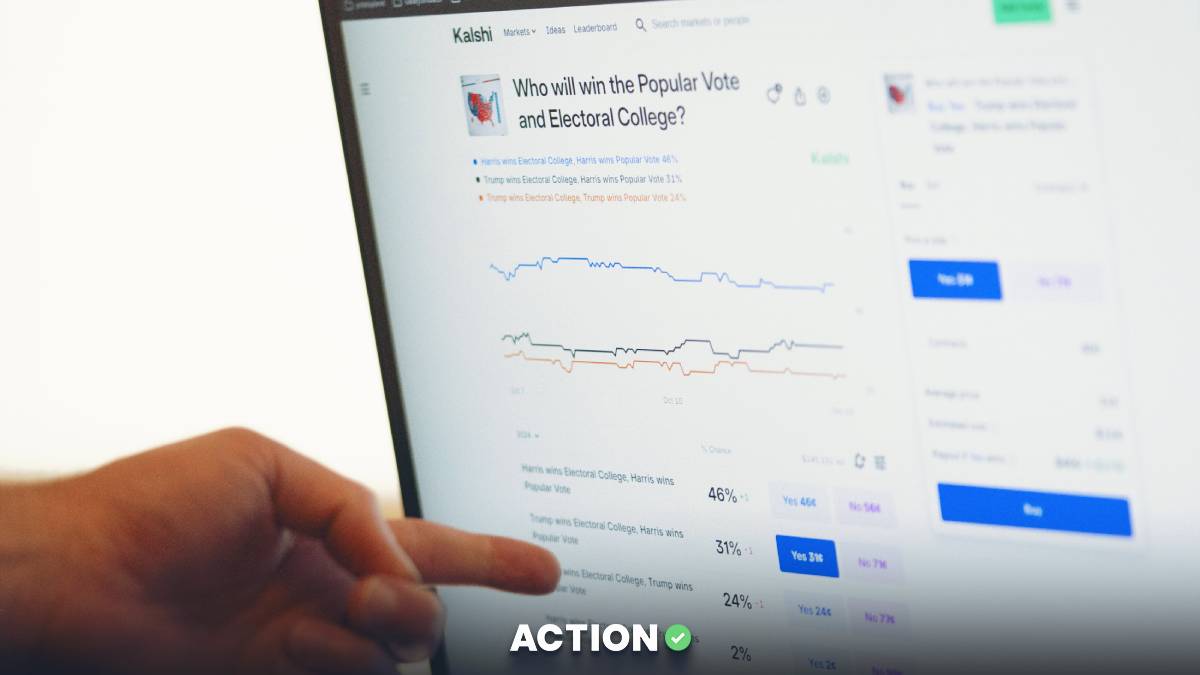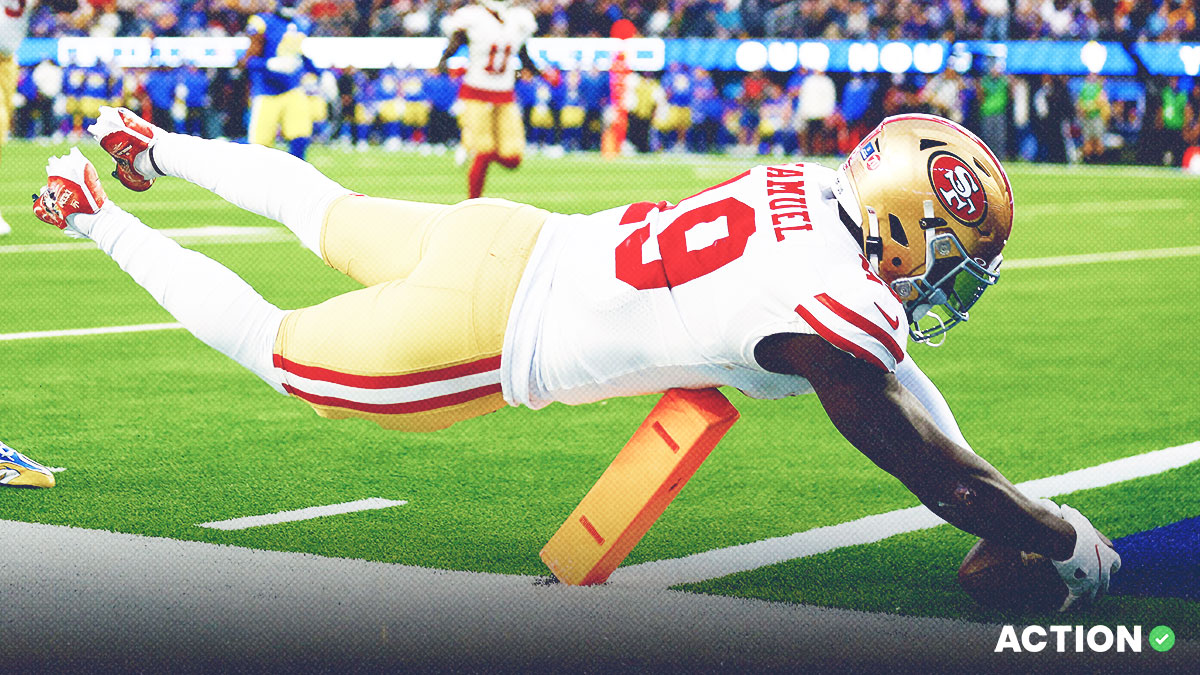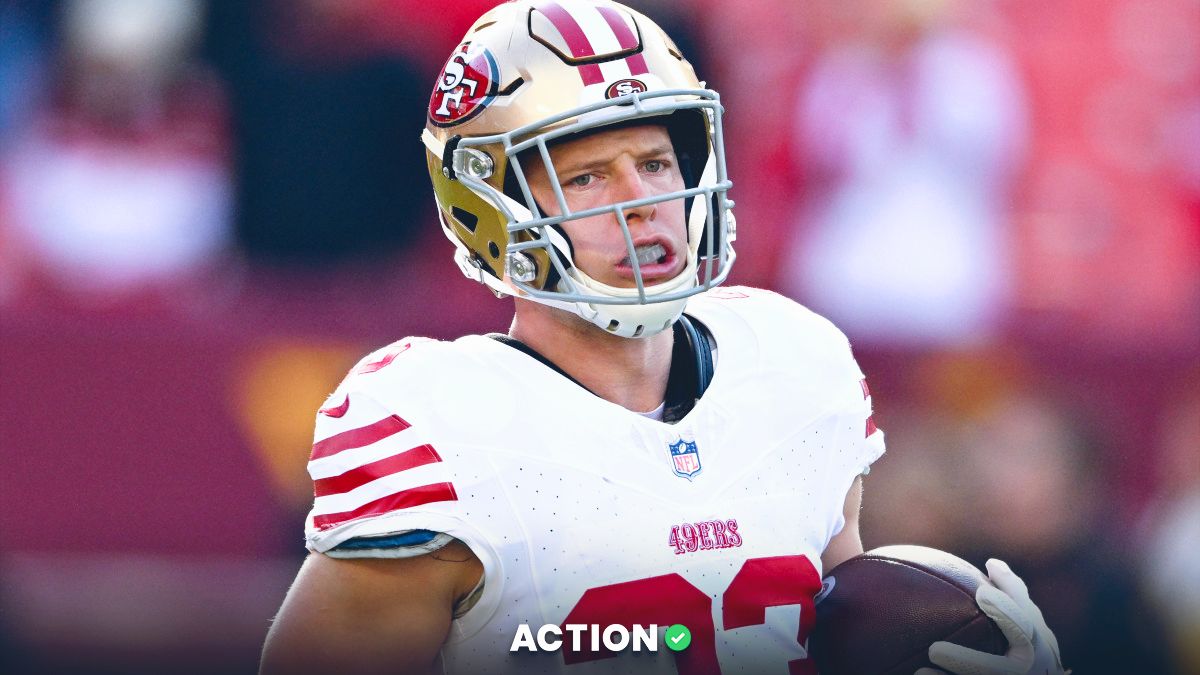bet365 has had a choice of sign-up offer in the United States for a while — either a $1,000 first bet safety net, or a bet $5, get bonus bets offer (usually $150 or $200, depending on the time of year).
But which one should you actually take? It depends a little bit on personal preference, risk tolerance and some basic math.
Here's the TLDR: Over a large sample, the safety net will be worth about 40-50% of the advertised value, so if you max out the $1,000, it will be worth between $400 and $500. The bonus bets typically convert at 65-70% if you use them properly, so $200 will be worth about $130 in cash.
| Offer | Conversion Rate | Total Winnings |
|---|---|---|
| $1,000 safety net | 40-50% | $450 |
| $200 bonus bets | 60-70% | $130 |
Considerations for Choosing Your Offer
Total value shouldn't be the only consideration, though. Here's what else you should consider:
- Bankroll and what you can deposit: To fully execute the "matched betting" approach that we detail below to lock in profits on the $1,000 safety net, you need between $3,000 and $4,000 on hand that you can deposit into bet365 and another sportsbook.
- Risk tolerance: If you execute the matched approach correctly, there's not a ton of risk. But if you're new to this style of betting, there's always a chance you could make a mistake — bet the wrong amounts, bet both sides at the same sportsbook (a definite no-no), bet a small market and get your bet rejected on the hedge side, or let your bonus bets expire because you're leaving the state before you can use them. And if you do decide to gamble with these promos, you could of course end up losing money.
- Do you want to gamble, or just earn cash? If you just want some bonus bets to mess around with a small deposit, I recommend just taking the bonus bets. It's simple, straightforward and will give you a little extra money to throw around during a football weekend. If you want to actually earn the most cash, take the safety net and max it out.
So Which bet365 Promo Is More Valuable?
So which offer will turn into more cash? It's not that black-and-white for you specifically, since you could turn the $200 worth of bonus bets into $1,500 in cash with a series of shrewd parlays, and your friend who uses the $1,000 safety net could lose their first bet, then all the ensuing bonus bet wagers and end up down $1,000.
Offer 1: Bet $5, Get $200
There are two optimal ways to use bonus bets — "convert" them to cash, or bet at plus-money to optimize the expected value. I'll break down both.
Method 1: Conversion
Can you guarantee cash from bonus bets? You can with a method called "conversion." (You can read our full guide to bonus bet conversion here if you need more detail).
Step 1 is to bet the plus-money side (i.e. the underdog) with your bonus bet. The higher the line, the better. Below, I've bet $10 on Stanford at +1400 against Notre Dame.
Step 2 is to bet the opposite side (the favorite) of that same wager at a different sportsbook. The closer the favorite price is to the underdog, the better. You'll "convert" at a higher rate this way. It must be a different sportsbook, or they'll likely void your bonus bets.
Results:
- If Stanford (+1400) wins: You'll win $140 off your $10 bonus bet, but lose the $131.76 cash bet that you used to hedge for a total profit of $8.24.
- If ND (-1599) wins: If Notre Dame wins, you'll lose your $10 bonus bet, but you'll profit $8.24 in cash. Same amount.
Here's what it looks like in practice with a tool like CrazyNinjaOdds, which will show you the exact amounts to bet.
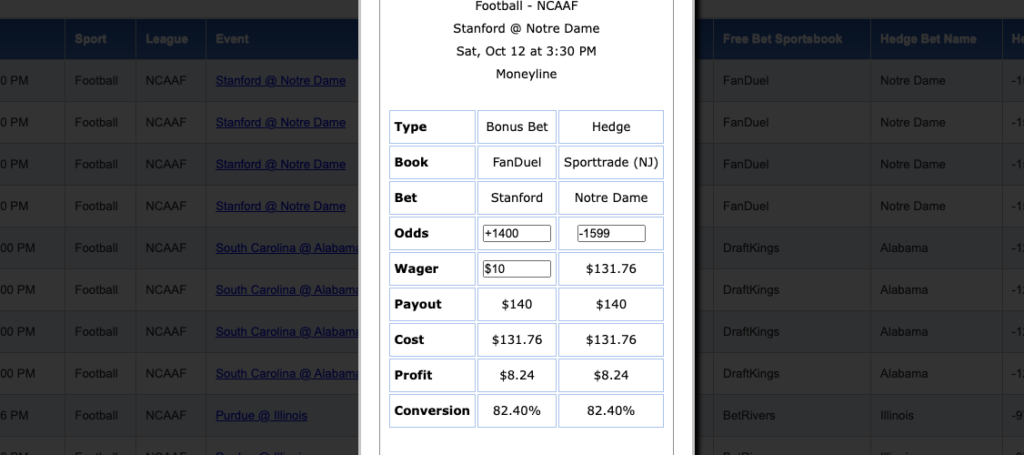
So no matter who wins the game, you'll win about the same amount.
If your bonus bets get bigger, you'll need more cash to hedge on the other side, which should be a consideration depending on your bankroll.
Method 2: Betting at Plus-Money
The "optimal" way to use your bonus bets is to bet at plus-money. That's because you don't get the stake back even if you win, so you're always going to get more expected value betting underdogs. Expected value is what you'd earn if you placed the bet an infinite number of times.
Say you're trying to decide whether you should use your bonus bet on a huge favorite — Libertymoneyline (-900) against FIU — or a longshot, like FIU -6.5 (+900) in that same game.
- Based on the +900 price, we expect FIU to cover that alternate spread about 10% of the time. This means the expected value of the $100 bonus bet is $900 x 10% = $90 EV.
- If you instead were to bet on a -900 favorite you would win $11.11, 90% of the time = $10 EV. Much less.
| Bet | Wager | EV |
|---|---|---|
| FIU -6.5 (+900) | $100 | $900 x .09 = $81 EV |
| Liberty -900 | $100 | $11.11 x .90 = $10 EV |
We like to look for tight, two-way markets priced between +300 and +700 when using bonus bets.
Offer 2: $1,000 first bet safety net
There are two optimal ways to use bonus bets — "convert" them to cash, or bet at plus-money to optimize the expected value. I'll break down both.
Method 1: Conversion
If you max out the $1,000 safety net and employ a technique called "conversion," it will be worth about $400-$500 in cash.
Here's how it works.
Step 1: Bet a big underdog with your safety net bet. You can bet the max of $1,000 at bet365 if you're comfortable, but you'll need a lot of cash to hedge the other side. In the example below, I took FIU +600 against Liberty.
Step 2: Bet the other side of the game wager at another sportsbook. If your promo bet wins, you're done and you've profited $441. If it loses, move onto Step 3.
Step 3 (if necessary): If the promo bet (underdog) loses you'll get $1,000 in bonus bets back. You'll need to convert those to cash, using the same method we described above.
Either way, as you can see below, you'll be up $441 in profit.
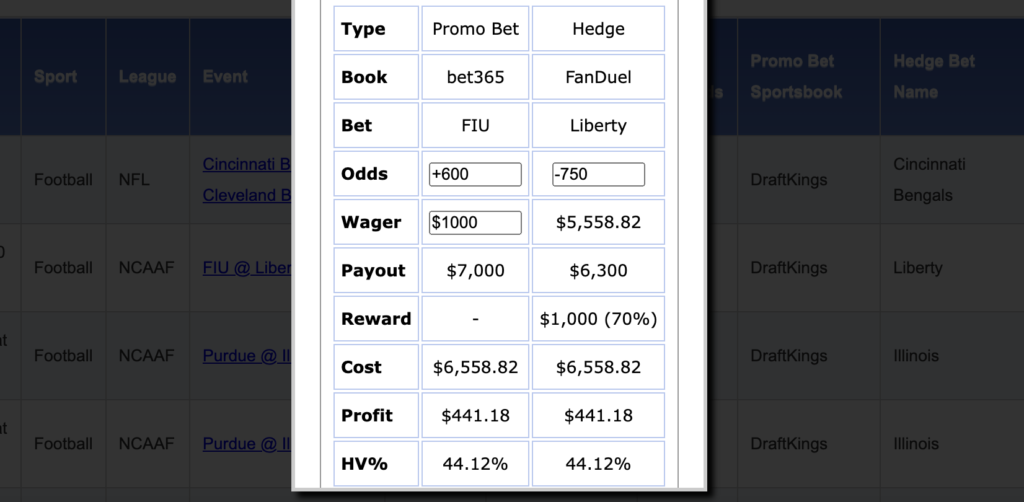
Here are a few other tips.
- Since you want 1) a big longshot and 2) another sportsbook with a line on the opposite team that's as close as possible to your longshot, CrazyNinjaOdds can find these opportunities for you, so you're not digging through 10 sportsbooks and thousands of markets to find optimal conversion opportunities.
- Stick with main markets like moneylines in major sports. If you try to wager $5,558 on one side of a random prop, your bet might be rejected.
- Never bet both sides at the same sportsbook, as they'll likely void your promo.
- Make sure you have these bets queued up at the same time, so the lines don't move on you.
Method 2: Betting at Plus-Money
Like with bonus bets, your expected value on first bet insurance/safety net offers is always going to be higher if you bet underdogs. It's a little counter-intuitive in that you want to find a bet that more often triggers the insurance payout, even though you'd obviously prefer to just win your first bet.
You can also use the CrazyNinjaOdds tools to find bets with high expected value with your first bet safety net.
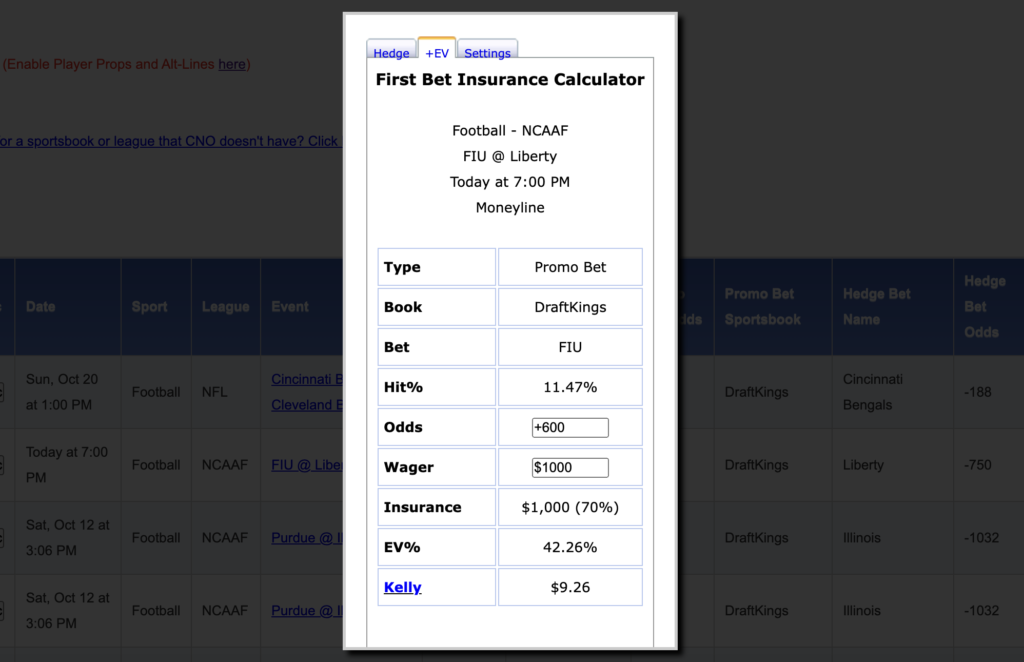
Scenario 1: You bet a big favorite with your $1,000 insurance at -500 that has an 85% chance to win. Most of the time, you'll win $200. Sometimes, you'll lose $800 if you employ the same strategy on your ensuing bonus bets. A few times, you'll lose the entire $1,000 if your ensuing bonus bet wager also loses.
Your expected value from the $1,000 insurance bet is low — about $45.
The math: .85 * ($200) + .21.85 * (-$800) + .15.15 * (-$1000) = $45
Scenario 2: You bet a big underdog with your $1,000 first bet insurance at +500 that has a 15% chance to win, so 15% of the time you'll win $5,000. Sometimes, you'll lose the entire $1,000. Other times, you'll win $4,000 if you employ a similar strategy with a longshot on your ensuing bonus bet wager.
The math: .15 * ($5000) + .85 * .15 * ($4000) + .85*.85 * (-$1000) = $537
Here, your expected value is much higher — north of $500 cash off the $1,000 wager.
Unfortunately, in today's sports betting environment, there aren't dozens of $1,000 insurance offers and you could lose all $1,000 doing this. So if you're not comfortable losing this much money, consider a different method, even if this is mathematically optimal over a large sample.



